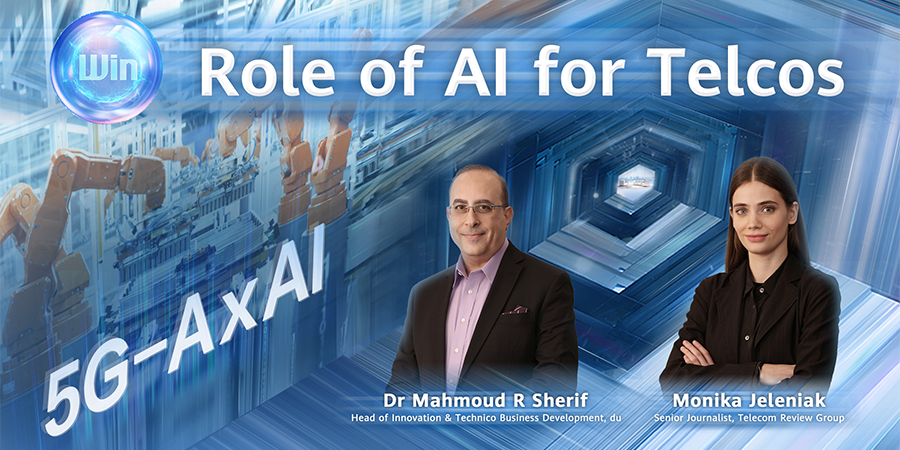
In the digital era, data consumption is poised to grow sharply. Yet, transmitting massive amounts of data is costly especially in locations lacking reliable terrestrial communications infrastructure. Telecom Review Asia speaks with Harsh Verma, Vice President Asia, Global Sales, SES to understand how innovations in satellite connectivity can reliably meet the demands of tomorrow’s networks.
What are the key technology innovations that are enabling SES to provide differentiated multi-orbit services at a cloud scale?
Globally, the number of connected devices and demand for bandwidth-intensive applications will continue to soar. Emerging markets in Asia-Pacific and Latin America are likely to witness the strongest growth for satellite capacity demand. Yet, in a heterogeneous region like the Asia-Pacific, where reliable broadband connectivity is often limited to urban centres, much of the population is still unconnected. This adversely restricts digitalisation efforts, now a national ambition for many countries, to leverage technological innovation and reap the economic benefits of a digital economy.
With digital inclusion high on the agenda for many countries, satellite technology is key to providing connectivity to underserved areas where terrestrial infrastructure is challenging to build and maintain. As a global satellite operator, SES is leveraging its multi-orbit fleet of satellites to provide cost-effective and reliable solutions to extend terrestrial networks.
We understand different applications require different types of satellite-based solutions. Each of our customers has their own unique requirements which means we need to be able to provide a wide range of services. Our geostationary satellites provide global coverage, allowing us to serve customers anywhere on Earth, while our medium Earth orbit constellation caters for bandwidth-intensive applications with its low latency and high throughput services focused on a particular location or region of high demand.
As more content is being migrated to the cloud, SES has changed its managed network services portfolio to deliver private, dedicated connectivity from SES’s GEO and MEO gateways to leading cloud service providers. With our SES Cloud Direct service, we enable enterprises and governments worldwide to reach any global end-point, connect to any cloud provider, and scale services as more cloud and edge services are adopted. With the launch of our next-generation MEO constellation, O3b mPOWER, dedicated, secure and reliable cloud services over satellite will be delivered with higher performance than ever. It will be SES’s most flexible and powerful satellite ecosystem to date, stretching the reach and capabilities of telcos and MNOs to narrow the digital gap and meet critical industry needs.
Around the world, underserved communities are falling behind while global demand for connectivity soars. Communication is a fundamental social process, and recognised as a basic human right under Article 19 of the UN’s Universal Declaration of Human Rights. The way we communicate is increasingly reliant on the internet, and O3b mPOWER will enable the communities that lack any meaningful connectivity solution to leapfrog into the cloud-enabled online world. This in turn enables their success.
As cloud adoption continues to gain traction in the foreseeable future, how does SES expand leadership in cloud-optimised connectivity?
SES partners with the world’s leading cloud service providers to provide one-hop, lowest latency connectivity to the cloud to power future-proof connectivity. For instance, our partnership with Microsoft facilitates seamless cloud connectivity to support access to Azure suite of cloud services and applications. We are the first Microsoft Azure ExpressRoute services partner offering Azure customers opportunities to leverage satellite-enabled managed services to connect rural, remote, or underserved areas. With the launch of O3b mPOWER, Azure will be capable of supporting greater resiliency and higher-performing, lower-latency satellite connectivity solutions to customers globally.
In addition, SES is part of the Amazon Web Services (AWS) Direct Connect Delivery Partner program to deliver seamless global connection between any location and AWS, backed by robust service level agreements covering availability, throughput, and latency.
These initiatives are aligned with the ecosystem’s shared vision to extend intelligent cloud network solutions to elevate industries and societies in the digital economy.
We have also partnered with a wide range of terminal providers to ensure that O3b mPOWER is compatible with a plethora of end users in various industries. As we move towards a software-enabled satellite ecosystem, we are trying to become more flexible with the hardware that works with the system so that more customers can seamlessly integrate satellites into their network.
How does O3b mPOWER differ from the upcoming LEO constellations and why did SES choose MEO?
Owing to the satellites’ proximity to Earth, upcoming LEO satellite constellations promise negligible latency ideal for real-time applications. However, as these satellites operate near Earth, they cover less region of the earth and require thousands of satellites to provide seamless global coverage. Not only is this costly to install, each satellite, being smaller in size compared to MEO satellites, delivers a lower total throughout. We have also seen that LEO constellations are approximately 3/4th of the time over uninhabitated areas or low demand regions, making the business case very challenging.
Comparatively, MEO satellites that are launched at higher altitudes provide an optimal balance between realising low latency, ultra-high throughout global coverage with just over a dozen satellites. Further flexibility on O3b mPOWER enables us to steer the beams over the hotspots or high demand regions to provide large concentrated satellite capacity focussed over a particular region.
Harnessing the benefits of MEO satellite constellations, SES’s O3b MEO constellation offers fibre-like low latency and multiple gigabits of throughput by being closer to the earth. Through the unique O3b MEO constellation, we have been successful at delivering connectivity to urban areas in landlocked Africa and central Asia.
Founded on the success of O3b MEO, O3b mPOWER is designed to support next-generation network services. This breakthrough provides unprecedented performance and scale, complemented by high throughput GEO satellites, enabling us to extend new, bandwidth-intensive network services and applications.
A flexible satellite system, the O3b mPOWER promises greater total capacity and satellite roundtrip latency at less than 150ms – requirements that support growing demand for bandwidth. As 5G continues to build momentum, O3b mPOWER’s backhaul solutions allow MNOs to dynamically scale up network needs as desired. More importantly, O3b mPOWER is capable of covering 95% of the world’s population to power seamless connectivity in the rural, remote and suburban and create new socioeconomic values in the 5G era.







